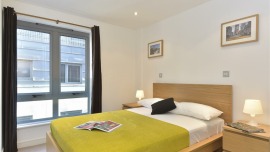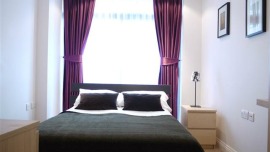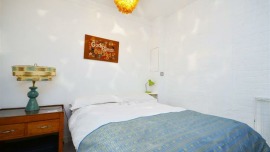London Bridge
"London Bridge" refers to several historical bridges that have spanned the River Thames between the City of London and Southwark, in central London. The current crossing, which opened to traffic in 1973, is a box girder bridge built from concrete and steel. This replaced a 19th-century stone-arched bridge, which in turn superseded a 600-year-old medieval structure. This was preceded by a succession of timber bridges, the first built by the Roman founders of London.
The bridge is the subject of the popular nursery rhyme "London Bridge Is Falling Down" and is regularly featured in popular culture.
The current bridge stands at the western end of the Pool of London but is positioned 30 metres (98 ft) upstream from previous alignments. The traditional ends of the medieval bridge were marked by St Magnus-the-Martyr on the northern bank and Southwark Cathedral on the southern shore. Until Putney Bridge opened in 1729, London Bridge was the only road-crossing of the Thames downstream of Kingston-upon-Thames.
The modern bridge is owned and maintained by Bridge House Estates, an independent charity overseen by the City of London Corporation. It carries the A3 road, which is maintained by the Greater London Authority. The crossing also delineates an area along the southern bank of the River Thames, between London Bridge and Tower Bridge, that has been designated as a business improvement district.
History
The abutments of modern London Bridge rest several metres above natural embankments of gravel, sand and clay. From the late Neolithic era the southern embankment formed a natural causeway above the surrounding swamp and marsh of the river's estuary; the northern ascended to higher ground at the present site of Cornhill. Between the embankments, the River Thames could have been crossed by ford when the tide was low, or ferry when it was high. Both embankments, particularly the northern, would have offered stable beachheads for boat traffic up and downstream – the Thames and its estuary were a major inland and Continental trade route from at least the 9th century BC. There is archaeological evidence for scattered Neolithic, Bronze Age and Iron Age settlement nearby, but until a bridge was built there, London did not exist. Two ancient fords were in use a few miles upstream, beyond the river's upper tidal reach. They were aligned with the course of Watling Street and led into the heartlands of the Catuvellauni, who at the time of Caesar's invasion of 54 BC were Britain's most powerful tribe. Some time before Claudius' conquest of AD 43, power shifted to the Trinovantes, who held the region northeast of the Thames estuary from a capital at Camulodunum. The first London Bridge was built by the Roman military as part of a road-building programme to help consolidate their conquest.
The current London Bridge was designed by architect Lord Holford and engineers Mott, Hay and Anderson. It was constructed by contractors John Mowlem and Co from 1967 to 1972, and opened by Queen Elizabeth II on 17 March 1973. It comprises three spans of prestressed-concrete box girders, a total of 928 feet (283 m) long. The cost of £4 million (£49.3 million in 2015), was met entirely by the Bridge House Estates charity. The current bridge was built in the same location as Rennie's bridge, with the previous bridge remaining in use while the first two girders were constructed upstream and downstream. Traffic was then transferred onto the two new girders, and the previous bridge demolished to allow the final two central girders to be added.
t:source: http://cs.wikipedia.org/wiki/London_Bridge 







![Apartment Shepherdess Pl London - [ALD] Old Street Walk Superior](https://img.book-travel.net/shepherdesspl/apartment-22575-london_w270h152a1c1bgcfff.jpg)


